20 Awesome Shrubs for Autumn/Fall Colour in the Garden
 Lee Burkhill: Award Winning Designer & BBC 1's Garden Rescue Presenters Official Blog
Lee Burkhill: Award Winning Designer & BBC 1's Garden Rescue Presenters Official Blog

Shrubs play a vital role in the garden's aesthetic by providing structure and texture to help connect your gardens planting scheme. They also offer a home for wildlife and ensure that any garden design has a good grounding with what we garden designers call 'punctuation' (the ability to break up an eyeliner with shrubs or structures). Most gardeners get to autumn time in the garden and realise that there's not much to look at. Which is where autumn shrubs come in!
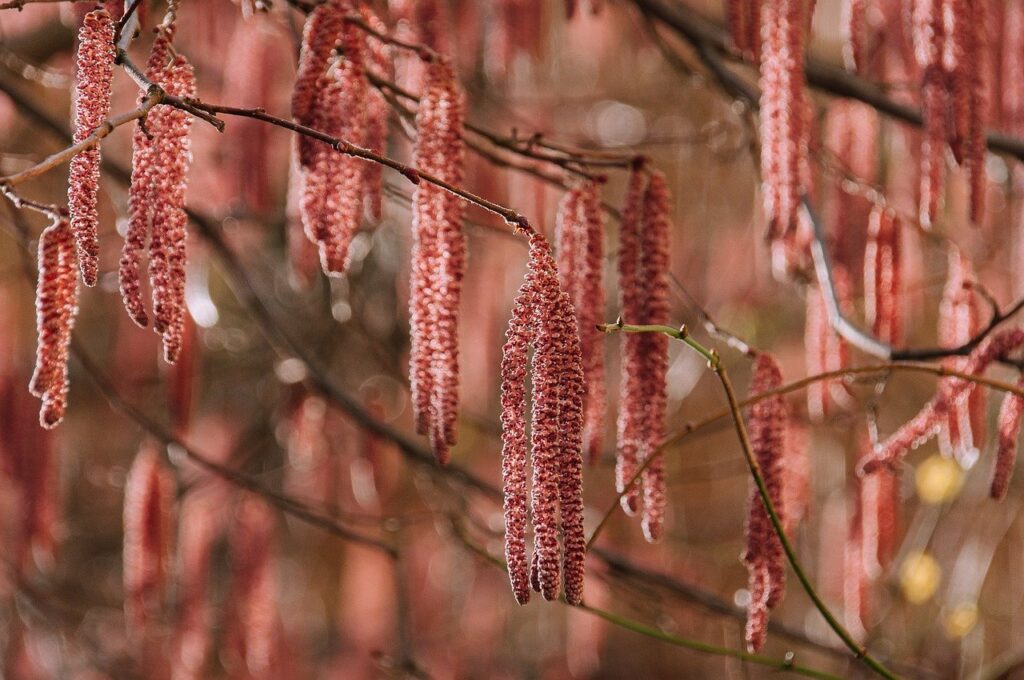
With the proper selection of autumn garden shrubs, you can also create a riot of colour during the darker days! These autumn shrub superstars bring a vibrant and eye-catching display as the seasons change. Let's take a look at my top 20 autumn shrubs to bring warmth to our colder seasons in the garden.
This page contains affiliate links for products I use and love. If you take action (i.e. subscribe, make a purchase) after clicking a link, I may earn some gardening commission which helps me keep the Garden Ninja Blog free for all.
If you want an autumn shrub that's going to jump out at you and scream, 'Halloweens here!' then the Burning Bush or Euonymus alatus is the one to go for. No other shrub brings such flame-red drama to the autumn garden.
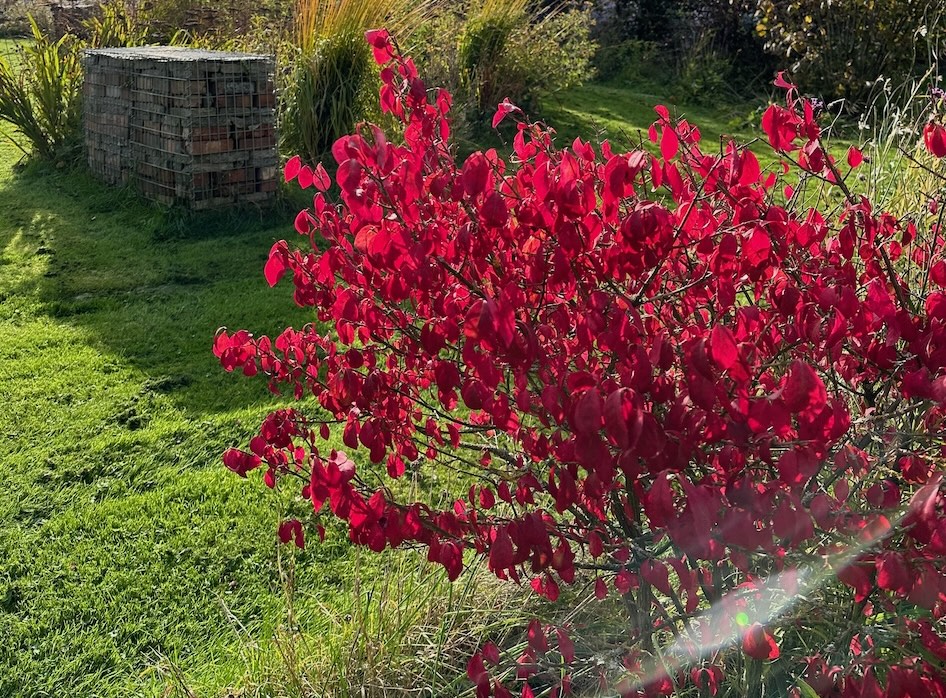
The burning bush, often referred to as the "winged Euonymus" due to its unique corky winged branches, is a must-have for autumn enthusiasts. Its foliage transitions from deep green to a fiery, brilliant red, making it a focal point in any landscape. This deciduous shrub's autumn performance is nothing short of spectacular, often accentuated by its distinctive red berries.
Well-behaved for small gardens and slow growing, this shrub will grow anywhere apart from deep shade. It hardly ever needs pruning or feeding, either, so it's a great beginner shrub.
Who fancies an autumn shrub that offers white flowers in July and then a red-to-purple colour explosion in Autumn? Well, Itea virginica offer just that! Virginia sweetspire, an American shrub, offers arching, elegant stems of dark green leaves that transition to shades of red, orange, and deep purple in autumn. Its cascading form and fragrant, bottlebrush-like white blooms in early summer make it an excellent choice for gardeners seeking a graceful display of autumn colour.
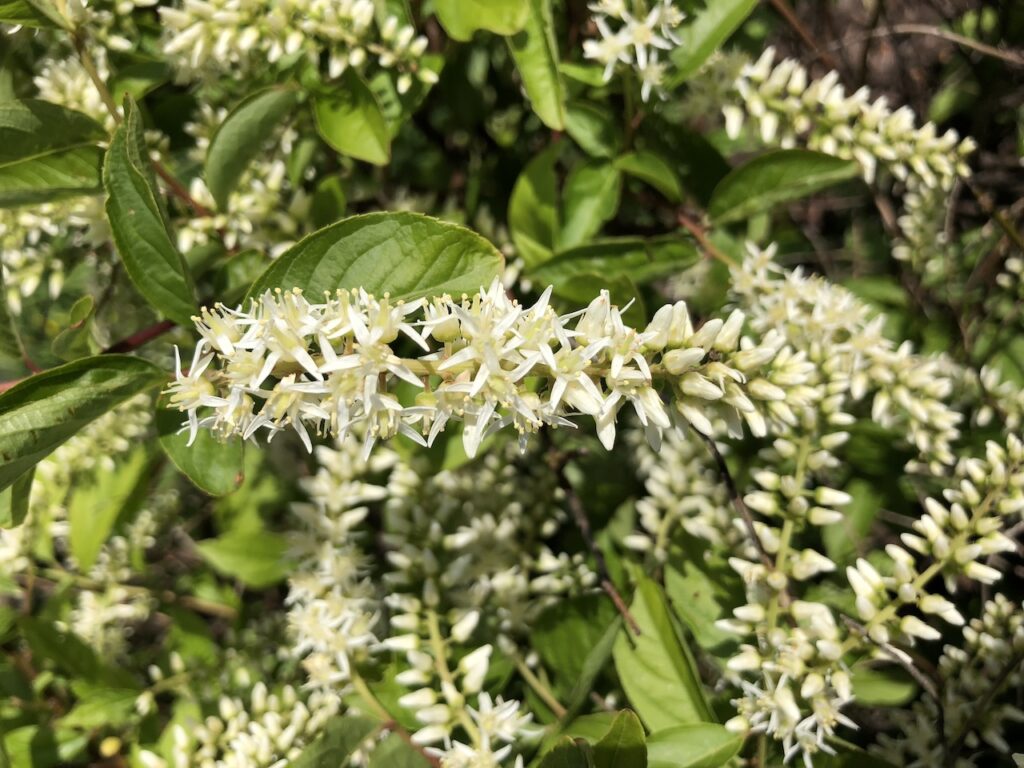
These autumn shrubs love acidic (ericaceous soil) and do best in free-draining sandy soil. So if you have heavy clay, look for other shrubs, as this one won't tolerate those conditions. They do, however, thrive in partial shade and don't like being baked. So this shrub is great for north, west or east-facing gardens.
Did you know that you can take my course and learn how to become a Garden Ninja yourself? Click here for details
A blueberry bush, I hear you cry? Why yes, these fruiting shrubs have a secret weapon other than their delicious berries in summer. Blueberry bushes not only yield delicious, nutrient-rich berries but also boast brilliant red foliage in the autumn. Their vivid transformation adds a vibrant, edible touch to your garden's autumn palette. As autumn approaches, they look fiery red before dropping their leaves, meaning they brighten up any kitchen or allotment garden.
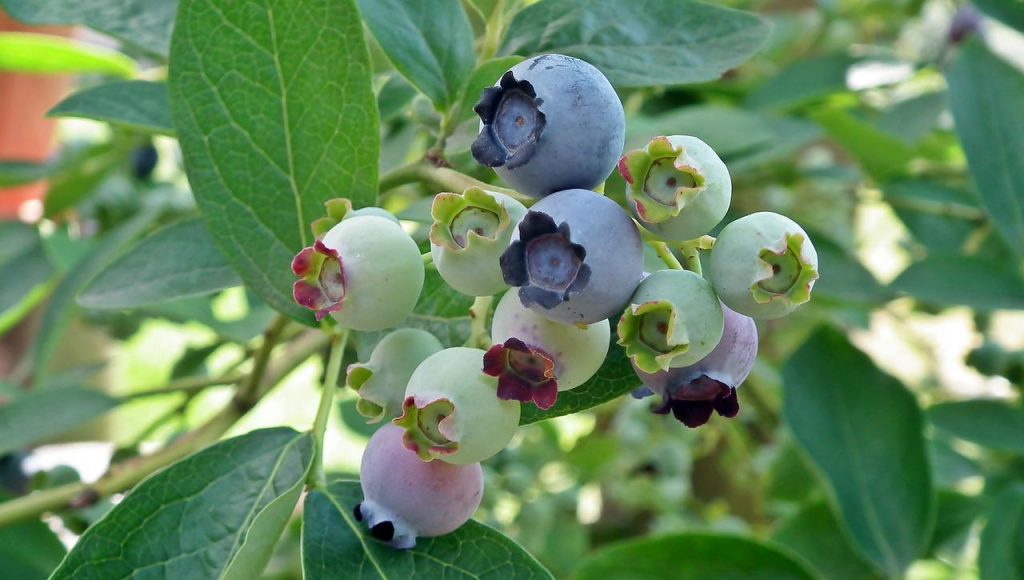
Grow blueberries in acidic soil, making them a great partner for Rhododendrons and Iteas and prune them each year to remove the oldest growth. That way, you ensure copious amounts of blueberry fruit and a fresh show of autumn foliage. They will grow in full sun, too.
Rhus is a fantastic genus of plant that's usually associated with the small tree Rhus typhina (the staghorn sumac that I use all the time on garden designs). However, Rhus aromatica (the fragrant sumac) is much different as it is a hardy, low-maintenance shrub that displays a range of autumn colours, from reds to oranges to scarlets.
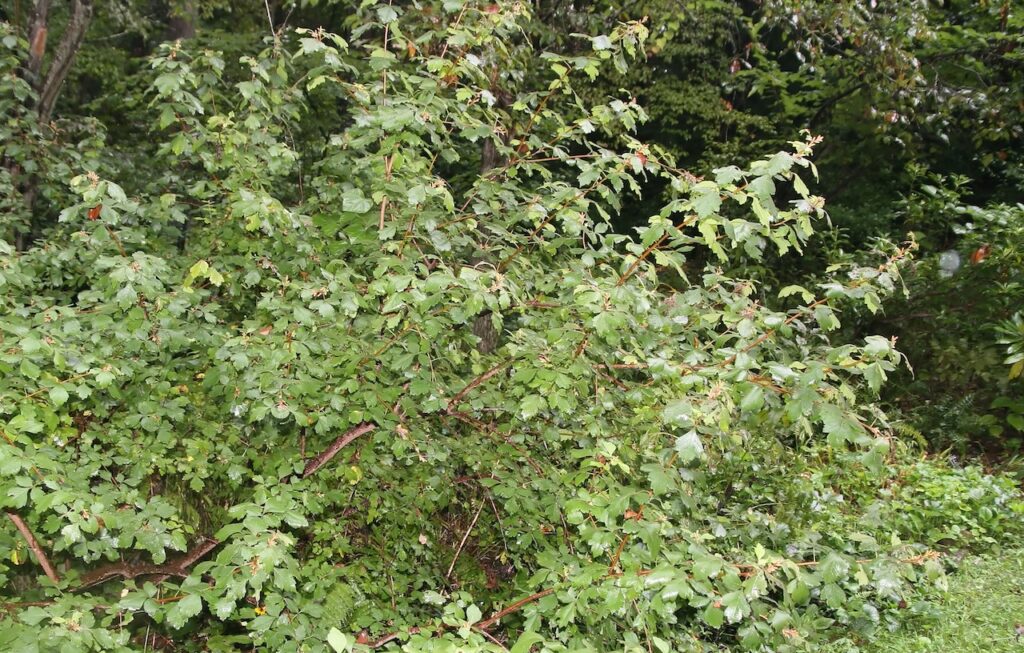
It's super low-growing form smaller gardens and acts as a great weed suppressor. The species name 'aromatica' gives a clue that the fragrant Sumacs leaves have a wonderfully heady scent of spicy citrus tones when crushed.
It's perfect for those looking to introduce a pop of autumn colour to their landscapes without demanding extensive care. This shrub is pretty bulletproof and will have gorgeous yellow flowers in the summer before its autumn transition. Happy in full sun and dappled shade, this shrub will grow anywhere.
Hydrangeas are more commonly recognised for their late spring flowers. Hydrangea querifolia has wonderful conical panicles (large spikes) of white to pink flowers, but there's another trick up its sleeve with its autumnal colours. Oakleaf hydrangea's name derives from its striking, oak-shaped leaves.
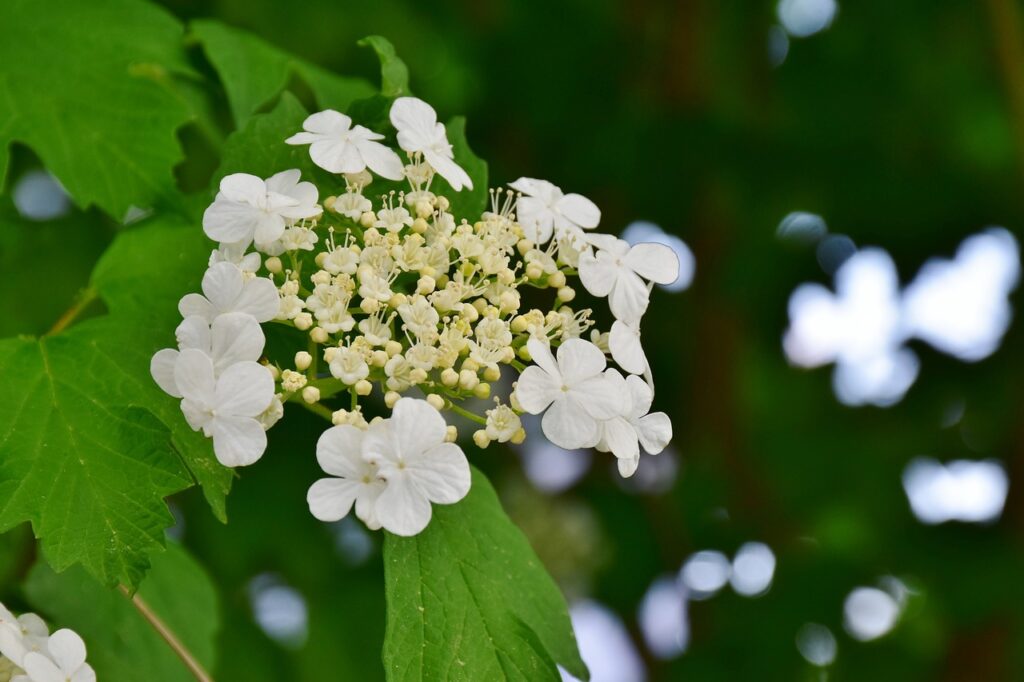
As autumn sets in, these leaves turn deep red, burgundy, and rich purples, giving your garden a touch of elegance. The shrub's distinctive exfoliating bark adds interest, even after the leaves have fallen.
These Hydrangeas will tolerate most soil types, apart from chalky alkaline soil. They will grow best in dappled shade. Give this specimen room to breathe as it can grow upwards of 2.5m in width and 1.5m in height, so it is best suited for medium to larger-sized gardens.
Even the common name of this wonderful shrub brings the feel of autumn with its witchy name tag. Fohergilla major, is more commonly seen in the USA than the UK, in particular in the Appalachian Mountains (think those New England fall tours with the leaves all different arresting colours).
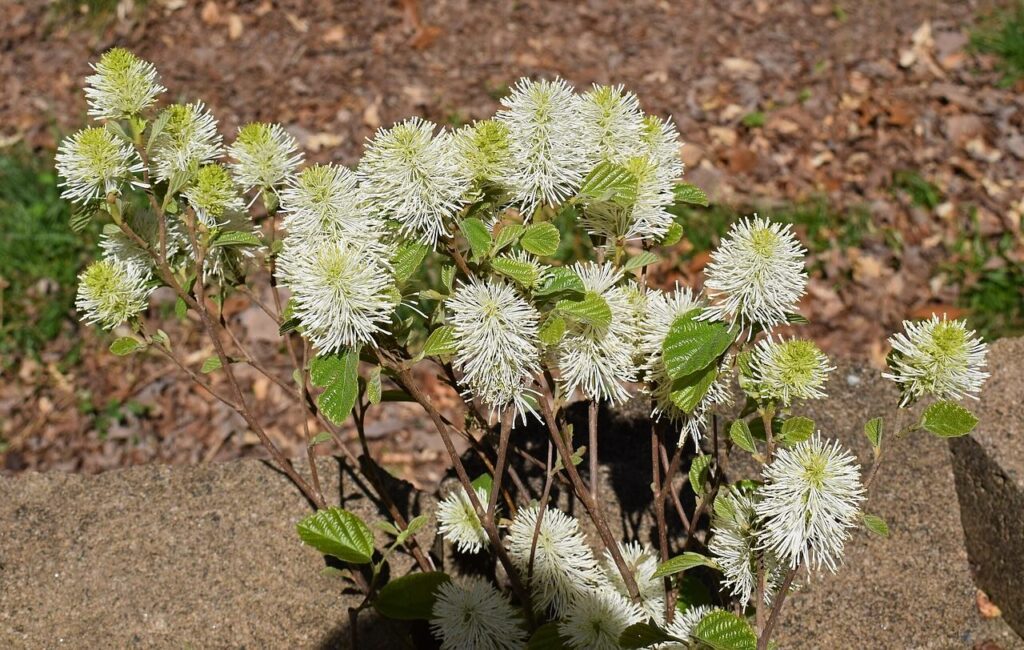
This lesser-known gem offers a subtle yet sophisticated autumn display with leaves transitioning from shades of green to hues of orange, red, and burgundy. Its captivating, bottlebrush-like blooms in spring are another highlight for garden enthusiasts.
These shrubs love acidic soil, which helps them put on such a show of autumn colour. It does require a bit of space getting to 2.5m in width, but this tough shrub can also be propagated by softwood cuttings in summer. Ensure that you use leaf mould to help imitate the forest-like conditions where this shrub would be found in the wild.
Witch Hazel (Hamamelis) is a multi-season performer, producing fragrant flowers in late winter and early spring. Often referred to as a winter flowering shrub, its autumn potential shouldn't be overlooked.
As the weather cools in autumn, its leaves transform into a splendid mix of yellow, orange, and red. The shrub's unique blooms add extra charm to the fall garden.
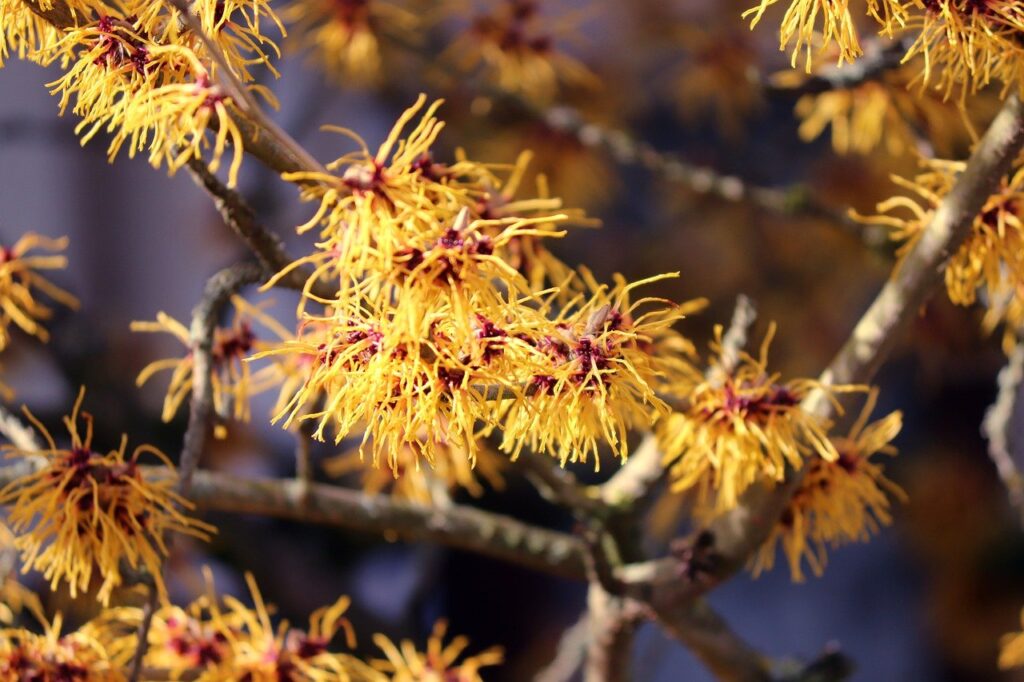
American witch hazel (Hamamelis virginiana) and Chinese witch hazel (Hamamelis mollis) are two distinct shrubs, each with its own unique characteristics. American witch hazel, native to North America, is a deciduous shrub known for its fragrant, spidery yellow flowers that bloom in late fall. In contrast,
Chinese witch hazel, hailing from eastern Asia, features fragrant, copper-red to yellow flowers that emerge in late winter or early spring. The American variety's flowering period sets it apart, as it brings vibrant colour to the late autumn landscape. With its early bloom, Chinese witch hazel is often a welcome spring harbinger.
These slow-growing autumn shrubs make a great feature even in the smallest of gardens. This is because they require very little pruning and won't take over. In fact, they are that slow-growing. Its best to buy a larger specimen rather than wait for a tiny potted Witch Hazel to grow!
If you have a suntrap of a garden, then Caryopteris is a fabulous late-season shrub to help keep the colours striking in your garden long after the herbaceous perennial borders have gone over.
Known for its striking blue flowers in late summer, Bluebeard doesn't disappoint in the autumn. Its foliage transitions to rich shades of burgundy and purple, creating a striking contrast with the remaining greens in the garden.
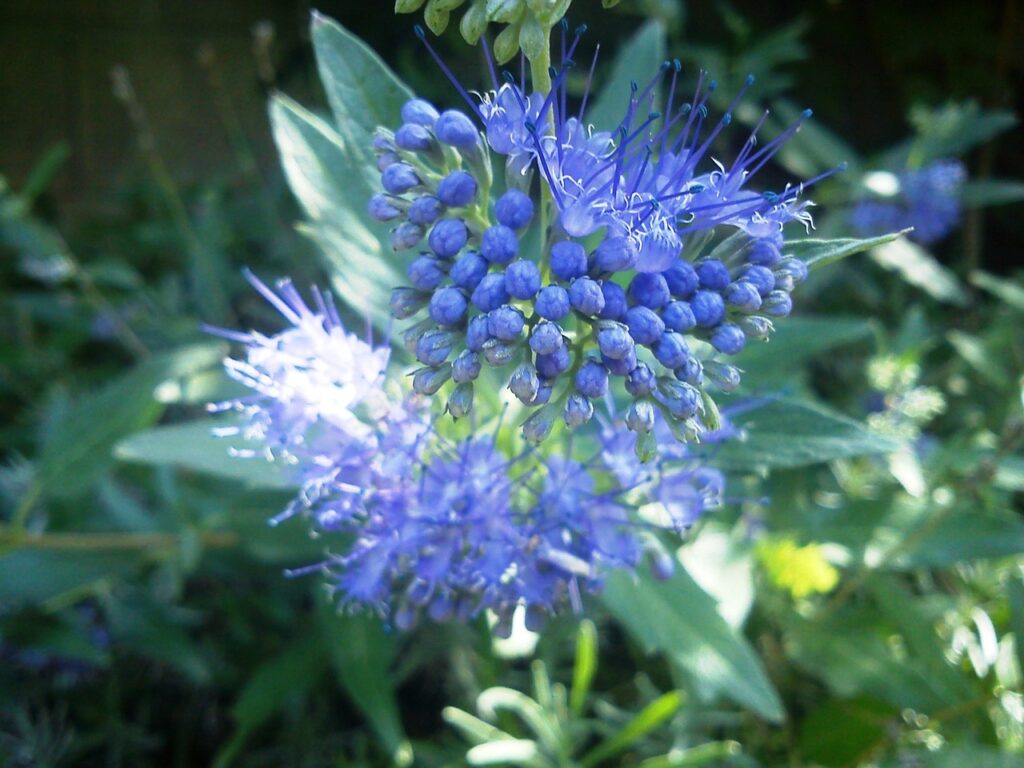
Great for smaller gardens as it doesn't grow much bigger than 1m in width and is classed as compact shrub. These plants do have a few dislikes, mainly water-logged clay soil or really harsh winters. Caryopteris needs a bit of protection from cold frosts and any exposure. They make great autumn shrubs for a warm-walled garden and can even be grown in containers or pots.
I will break the rules with this autumn shrub example: the Acer or Japanese maple. Although technically a small tree, Japanese maples are often pruned into shrub-like shapes, given how slow-growing they are, can often be considered a shrub in terms of size and growth habit. So indulge me!
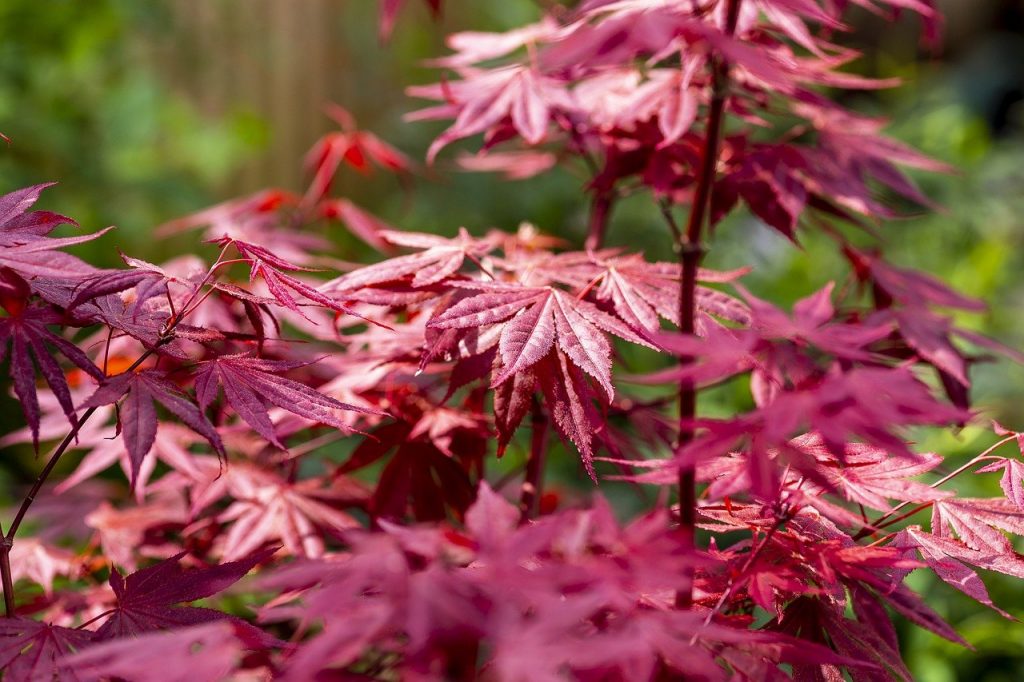
Japanese maples such as 'Sango kaku' and 'Bloodgood' showcase a wide range of autumn hues, from fiery reds to deep purples, and their finely cut leaves add texture and elegance to the landscape. Whether you want bright yellow, orange or blood red, there will be an Acer for you!
These slow-growing trees add much-needed height and interest to any garden. They do require shelter and hate to be baked in the hot sun or exposed to very windy gardens with frost. Other than that they don't require much attention or pruning save removing the odd dead branch. Look for specialist Acer nurseries to choose an unusual specimen that has the exact colour palette you're looking for in autumn.
Ninebark is one of my personal favourite autumn shrubs. Related to the rose, this dark and brooding shrub calls to any outsiders who just want to be different. I think of this shrub as the tall goth at the rock club standing there in all their glory, unbothered by others' opinions! This shrub, during the spring and summer, has dark, deep purple-coloured leaves that add a layer of mystery to any flower bed. The stems and bark are intriguing, with their ribbed and cracked appearance adding more to this shrub's mystery.
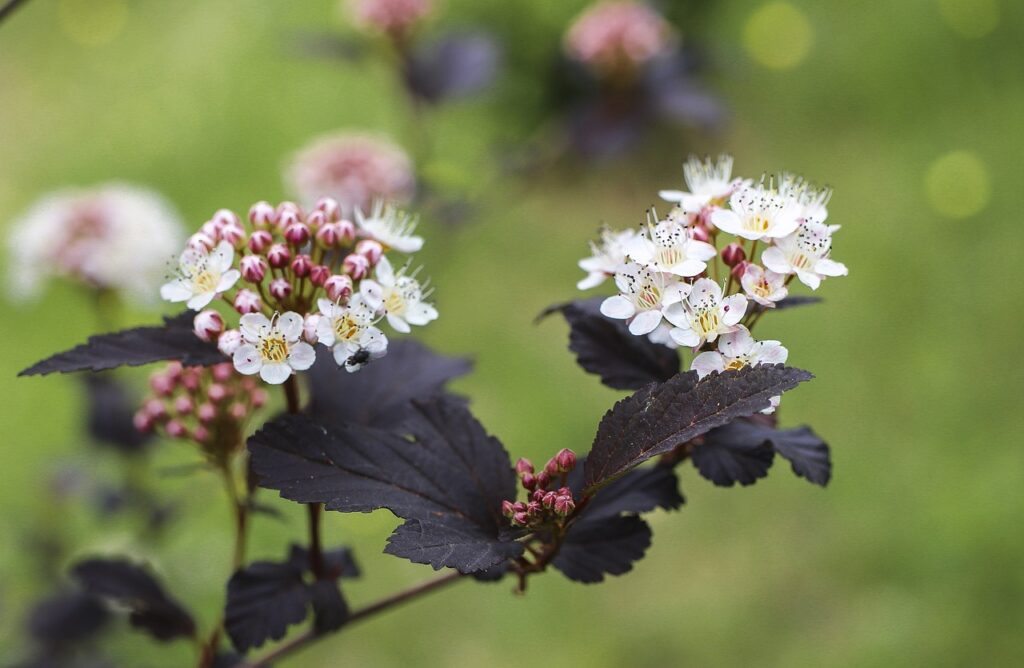
During summer, it creates creamy white flowers that pop off against the dark foliage and are a magnet for honey bees and insects.
Deep burgundy to red foliage attracts guests in Autumn and enhances the shrub's already attractive peeling bark. During its bare winter season, the bark again calls for your attention, so it's a really unusual shrub. It does get big, up to 2.5m in height, so plant it at the back of a border and give it some space.
The Amelanchier or Serviceberry/Juneberry is a garden designer's best friend. Featuring in nearly all small urban garden designs and most TV makeover guides, it can be easy to class this as a lazy choice. But let's take a look at why the Amelanchier is so popular.
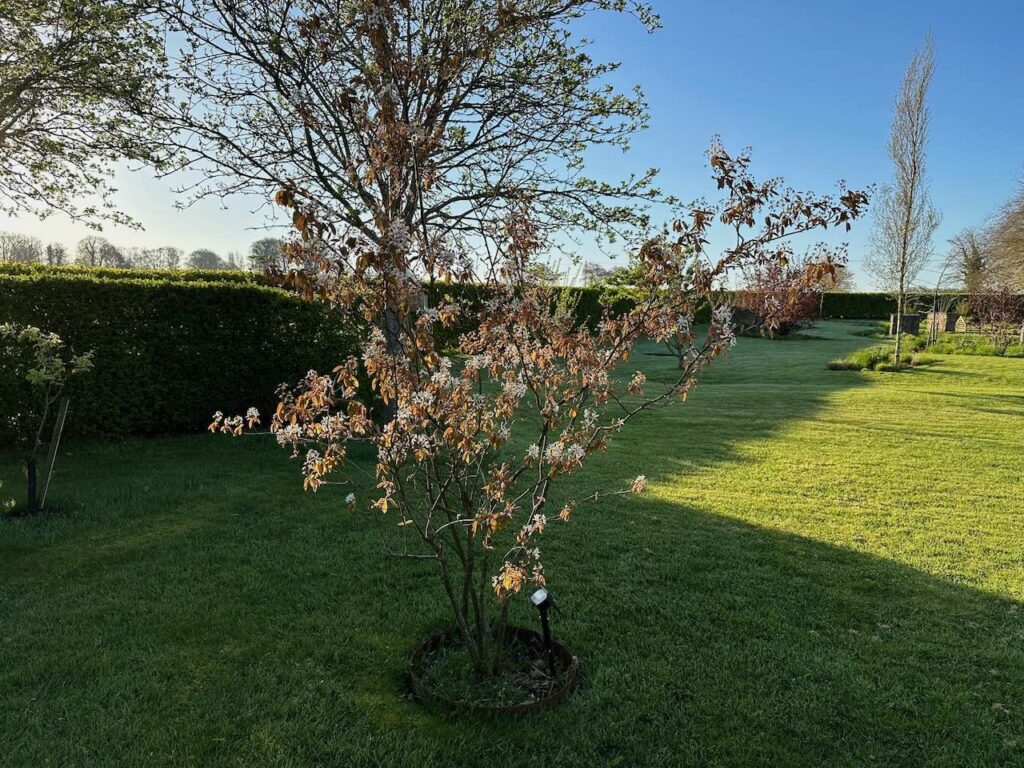
It has four seasons of interest. Yes, you read that correctly.
In spring, the Amelanchier has unfurling buds and then tiny white blossoms. Amelanchier puts on a splendid show of delicate, five-petaled white flowers. These blossoms are not only visually appealing but also attract pollinators like bees and butterflies. The profuse spring blooms are often a highlight of the season, covering the shrub with a blanket of white or pale pink, depending on the variety.
In summer, flowers give way to small, round, edible berries. The berries ripen from green to shades of red or purple, providing a bountiful harvest that can be enjoyed fresh or used in various culinary applications.
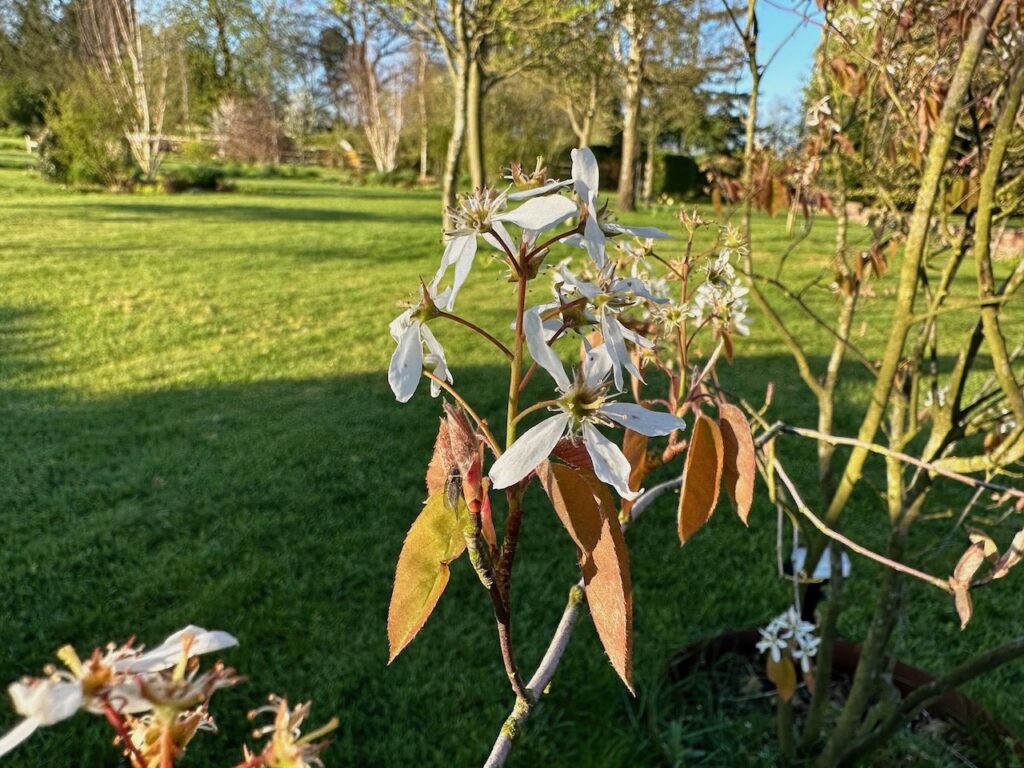
The autumn interest of Amelanchier, commonly known as serviceberry, is characterized by vibrant displays of orange and red foliage. During this season, the leaves of serviceberry shrubs and trees undergo a striking transformation, transitioning from their usual green to brilliant shades of orange and red. This autumn foliage adds a burst of warm and fiery colours to the landscape, enhancing the overall beauty of the garden.
Lastly, in winter, you have the graceful skeleton outline of the tree that can look beautiful when draped in fairy lights or even Christmas tree baubles!
Spiraea (often misspelt Spirea) gets a bad reputation as a boring shrub, but this couldn't be further from the truth! These shrubs offer simple foliage in the summer before gorgeous masses of flowers, whether white or pink, or red depending on the shrub species.
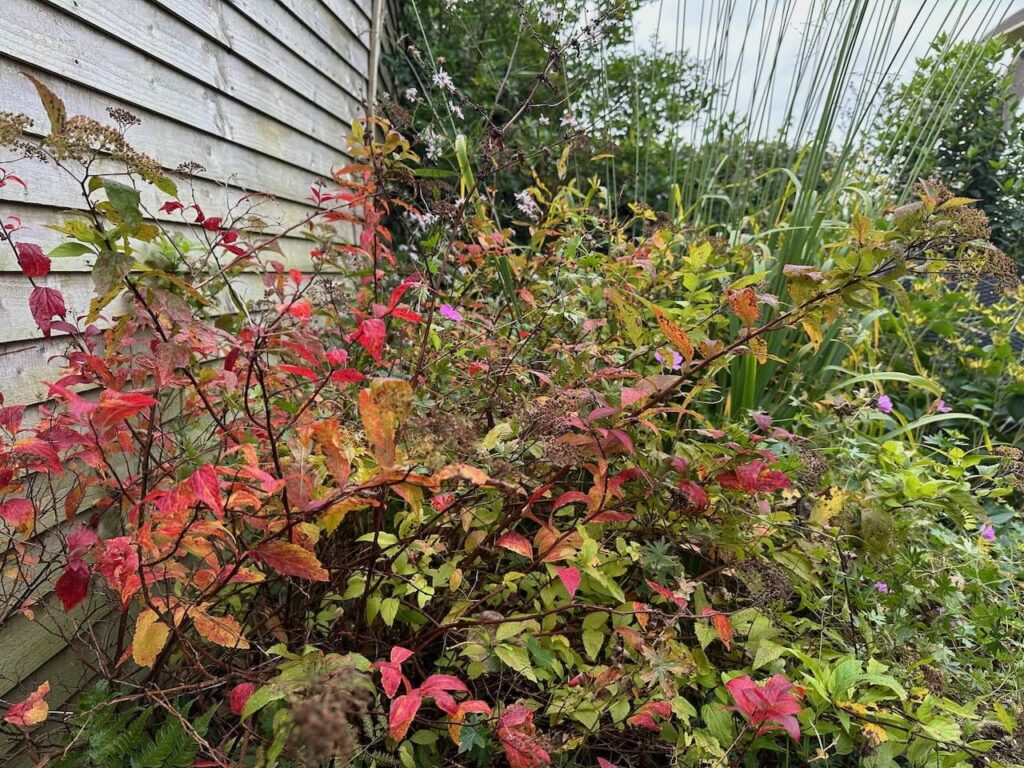
The flower pattern of Spiraea is characterized by delicate, clustered blossoms that appear in late spring and early summer. These flowers typically form in dense, spherical or flat-topped clusters, known as corymbs or panicles, depending on the Spiraea variety. The individual flowers have a simple, five-petaled structure and come in various colours, including white, pink, and shades of red.
Spirea's abundant and attractive blooms are a highlight of the shrub in spring and early summer, creating a beautiful and eye-catching floral display during the growing season.
Then in autumn, a transformation from boring green blob to an autumn firework takes place. Varieties like 'Anthony Waterer' offer brilliant red and purple leaves in autumn. The autumn foliage takes centre stage; the transition creates a striking contrast between the lush, green summer garden and the vivid autumn colours. It really does look like a tie-dye plant as the leaves turn colours.
They will grow pretty much anywhere and are easy to establish shrubs. Plant in the middle of a border to add interest and somewhere you can see from inside your house when wrapped up warm in autumn! That way, you can bask in its beauty without leaving the house!
While often grown as an annual for hanging baskets, Fuchsia magellanica or hardy fuchsias can be maintained and grown as a shrub or even hedge. It produces pendulous, tubular flowers in shades of red, purple, and pink throughout the autumn. While many plants have finished flowering by autumn, hardy fuchsia continues to produce its iconic pendulous, tubular flowers in shades of red, purple, and pink.
These blooms often carry on late into autumn extending the garden's season, which is overlooked by gardeners who mistakenly believe Fuchsia to be a summer-only annual or shrub.
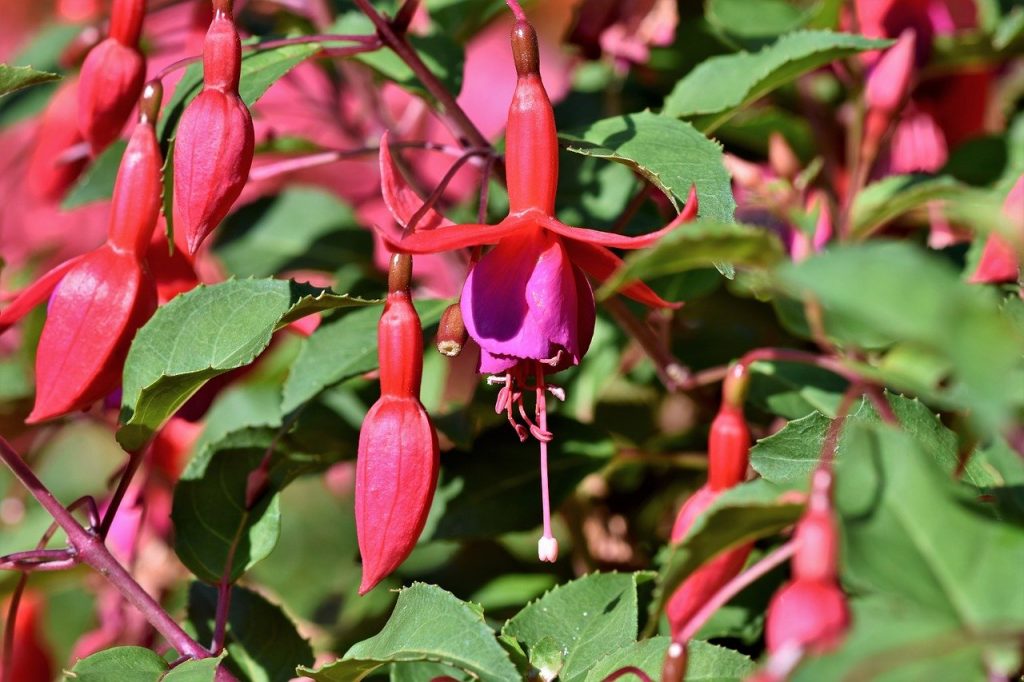
It's not known for wild autumn foliage like other shrubs but is one that continues to flower, making it an unusual choice. Fuchsia magellanica is also great value and easily found in most garden centres without breaking the bank.
This tropical-looking shrub will grow in all soil types and aspects, whether its full sun or some dappled shade. Fuchsias are also known for attracting moths, bees and butterflies. With its long flowering season, is offers precious nectar later in the gardening year when other flowers have stopped producing.
One thing Fucshias need is rich soil to keep flowering, so make sure you mulch and top dress your Fucshias each autumn and spring with a peat free compost.
Viburnum shrubs are a beginner-friendly plant that offers striking autumn interest with their vibrant, multicoloured foliage in shades of red, purple, and burgundy. Most Viburnum varieties also produce decorative berries or ornamental fruits that extend the visual appeal into winter. The fragrance released by certain Viburnum species adds an aromatic dimension to the garden in autumn, especially with late flowering varieties like Viburnum bodnantense 'Dawn'.
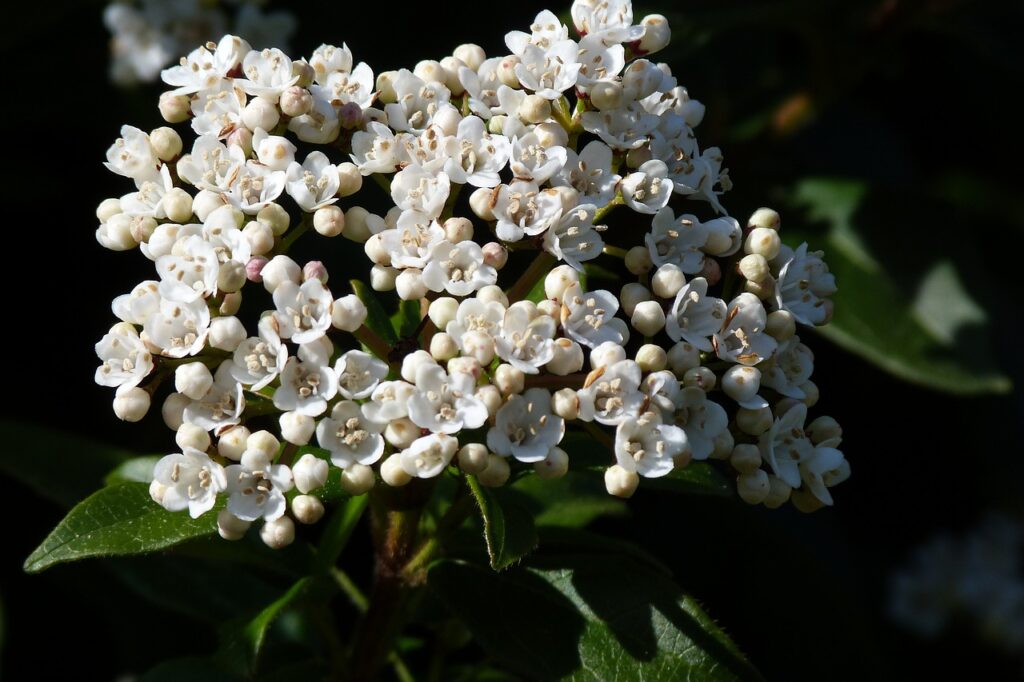
These low-maintenance shrubs come in various sizes and shapes, making them versatile additions to garden designs so it's worth while doing your research to pick the best size and flowering type with Viburnums. There are even a few evergreen specimens, such as Viburnum davidii or Viburnum tinus.
For a real wow shrub in a larger garden, try Viburnum opulus (the UK's native Viburnum, which is fantastic for wildlife and berries) or Viburnum 'Arrowwood' and Viburnum 'Mohican' varieties showcase deep red and purple foliage in the fall.
Viburnums are relatively pest-free and will grow in full sun or shade. They also will tolerate a wide range of soils, and smaller Viburnum can be grown in containers.
Cornus or Dogwoods are probably the easiest shrubs to look after and propagate. In fact, you'll probably spend more time trying to control them and dig up newly self-propagated versions than anything. So Cornus are great for a lazy gardener who likes the hard prune shrubs back to the ground every few years!
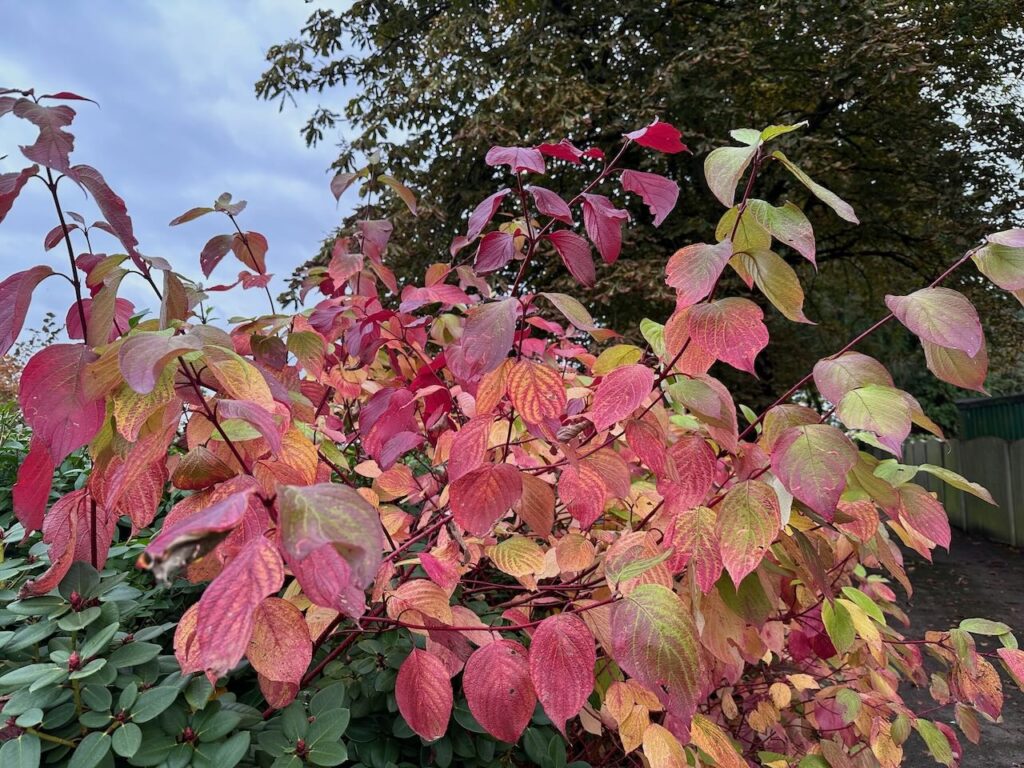
In the autumn, Siberian Dogwood's green leaves transform into a striking display of brilliant red, purple, and burgundy hues. This vivid foliage creates a captivating contrast with the surrounding landscape, adding warmth and visual appeal before it drops leaves to reveal its jaw-dropping bright stems.
Cornus are renowned for their vibrant stems. One of the standout features of this shrub in the late winter is its vibrant red stems. These bright red branches become particularly prominent as the leaves fall, providing an attractive feature that continues to shine throughout the winter. The colourful stems add a striking dimension to the garden during the colder months.
Cornus sibirica and other dogwoods should be treated with a bit of caution in smaller spaces as they do have a habit of taking over and thriving even in the worst of conditions. So use this to your advantage!
Clethra alnifolia, or summersweet clethra, is a robust deciduous shrub well-suited for a range of growing conditions. Native to eastern North America, it can tolerate both cold winters and hot summers. While it can adapt to various soil types, it thrives in consistently moist, well-draining, acidic soil. In the autumn, its green leaves turn a fabulous orange to yellow before falling, adding more heat to your autumn garden!
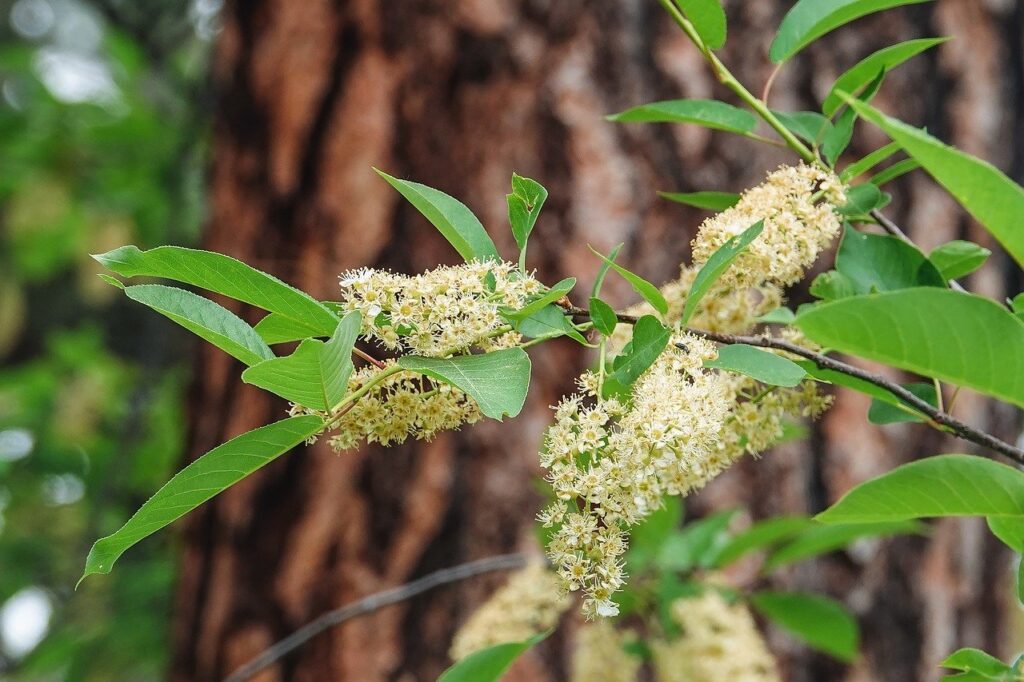
Clethra prefers partial shade or full sun, but it is highly adaptable and can tolerate both wet and dry conditions, making it a great choice for rain gardens and low-lying areas. Moisture-loving Clethra can even handle occasional flooding if you're in an area prone to this.
When it comes to pruning, it's typically unnecessary, but if it needs a prune, it's best done in late winter or early spring to avoid interfering with the next season's flower buds.
Its standout features are the highly fragrant, bottlebrush-like flowers that appear in mid to late summer. The sweet, honey-like scent is not only enticing to humans but also attracts various pollinators like bees and butterflies. It looks a bit similar to Buddleja but without the rampant growth habit or invasiveness.
These late-season blooms provide a welcome burst of colour and fragrance when many other plants have finished flowering. This makes it an excellent choice for extending the season of interest in your garden. Clethra alnifolia offers attractive green foliage during the growing season and turns golden-yellow in the autumn, providing multiple seasons of interest in the garden. It will grow pretty much anywhere and is well-behaved just protect from extreme frosts.
Fancy planting a shrub that looks straight out of a comic strip, then the Callicarpa is for you! This shrub originates from China and gives a taste of the exotic to any garden. Striking metallic purple berries and yellow autumn foliage make this shrub hard to ignore or miss. Its berries literally burn themselves onto your field of vision with their brightness!
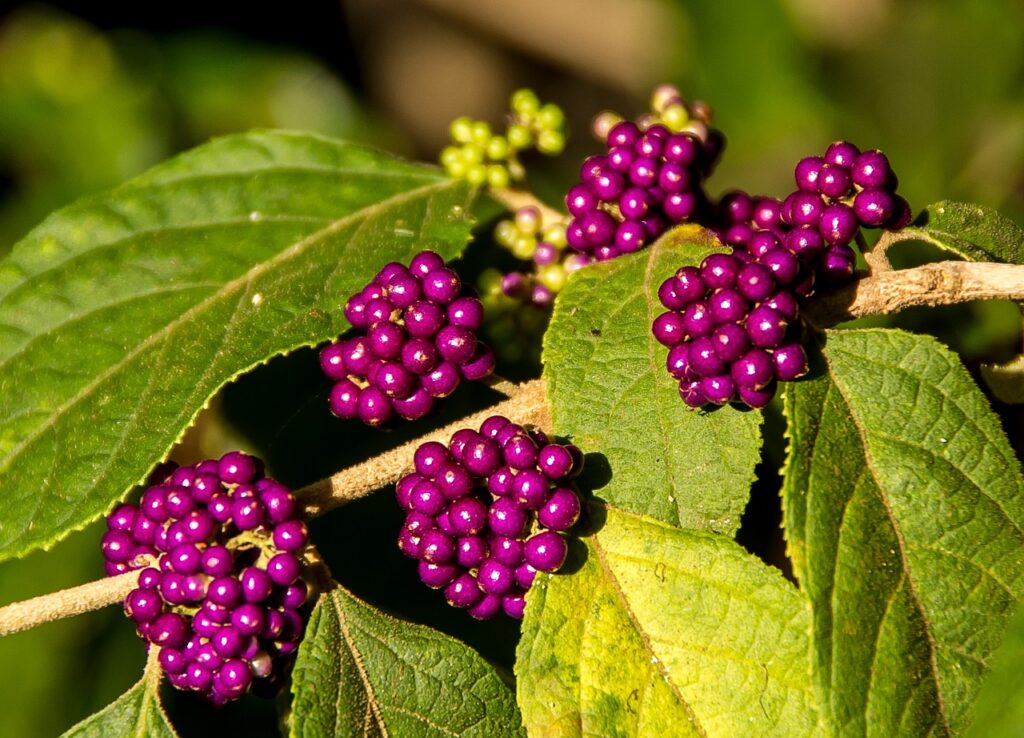
These berries persist well into the autumn, adding captivating colour to the garden when most plants have faded. Callicarpa is a wildlife-friendly choice, attracting birds to its berry-laden branches. Its deciduous leaves provide additional seasonal interest, turning warm shades of yellow or chartreuse in the fall. Low-maintenance and adaptable to different soil types, this shrub is a brilliant addition to most gardens.
Callicarpa are slow-growing and don't like being exposed to cold winds. So bear that in mind when you plant them. They will tolerate most soil types apart from heavy clay and don't require much pruning. Over time, they can grow to 2.5m tall and wide, but given they're so slow-growing, some yearly pruning can easily keep them neat and controlled.
Cotoneaster salicifolius is a fabulous open example of the Cotoneaster genus of evergreen shrubs. The Cotoneaster genus of plants is native to China and Tibet. Cotoneaster horizontalis has an unfortunate reputation of being both invasive and used to death on car parks and multiple planting schemes. Enmasse it looks lacklustre and awkward, but Cotoneaster salicifolius is different.
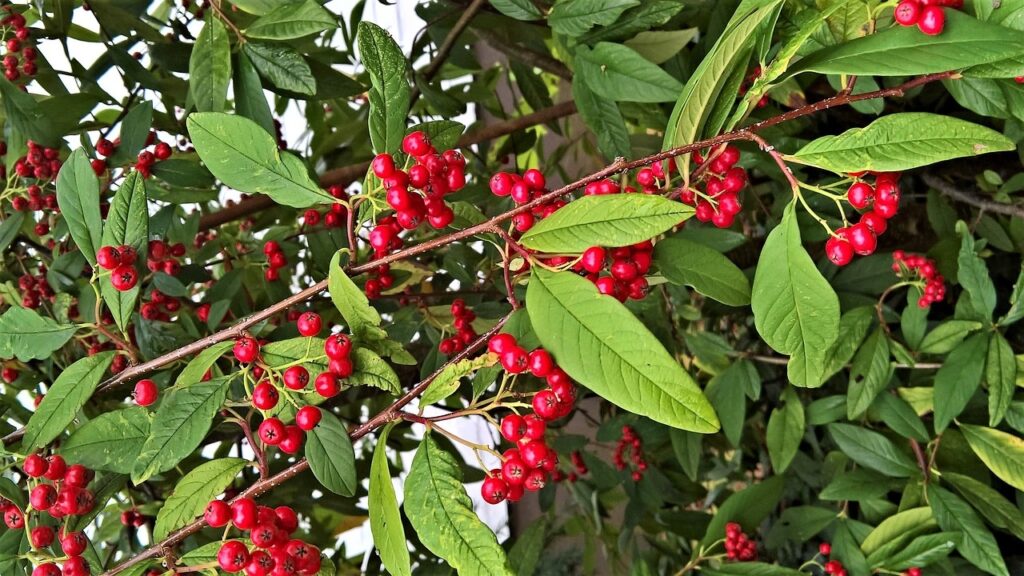
With a much more open habit, it's one to look for to help bring a blast of colour in autumn with its vibrant red berries. Birds absolutely love to eat them, which is why its cousin horizontalis has been classed as invasive, given birds propagate the berries rapidly through their poo!
In summer, this shrub has wonderful white-scented flowers that bees adore. Then, in the autumn, the shocking bright red berries appear. The evergreen leaves in harsh winters may turn a blush red. It's a great shrub for the middle of a border, given its open arching branches. It will grow anywhere and in any soil type so it s a wonderful beginner gardening shrub.
Crepe myrtle or Lagerstromia gets its name from its crepe paper-like frilly flowers, which are profuse. However, for some reason, not many gardeners know that this shrub exists! If you have a full-sun garden that gets baked, then this is a shrub for you. If you have a cold shaded garden, this shrub won't survive.
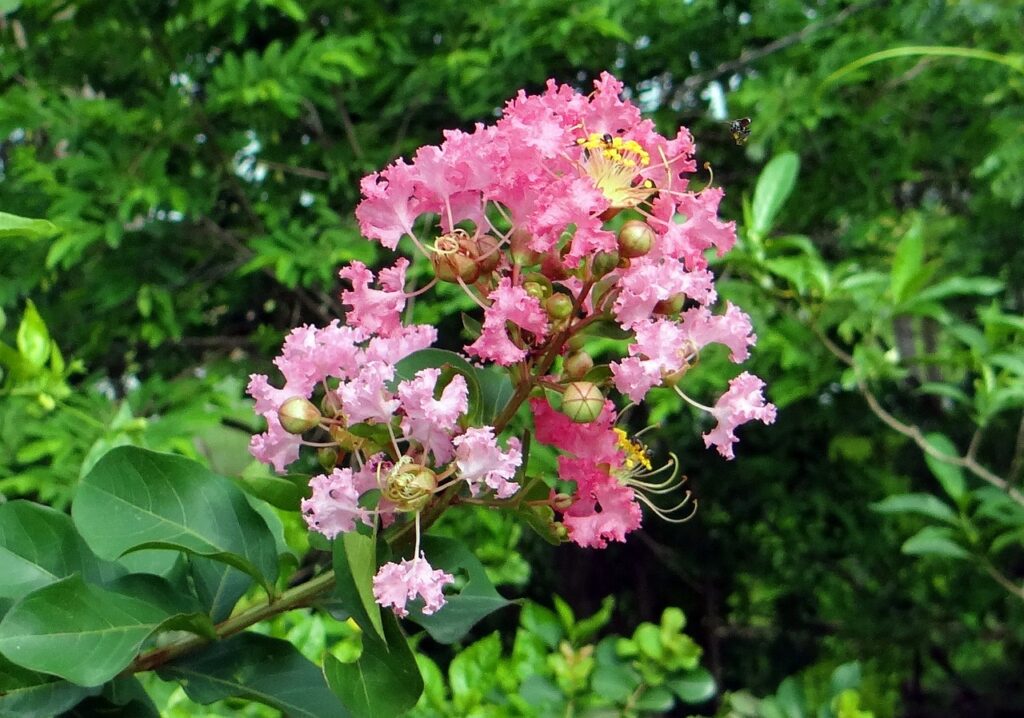
You may have even seen a number of them on holidays when in France, Spain or the Mediterranean. Similar to the wow of Bourganvilea but without the tender hardiness rating.
While Crape Myrtles are renowned for their blousy summer blooms, they also offer attractive autumn foliage as the garden quietens down. Their leaves transition to warm, golden hues in the autumn, providing a final burst of colour before winter sets in.
They require little to no pruning, and as long as they get full sun in summer, they are UK hardy. They can grow to quite the specimen, so only prune when you need to control the overall growth. Hard pruning each year or two used to be recommended, but it's not advisable. They will flower far better when left to their own devices and add a touch of tropical flavour to your sunny south-facing garden!
Pieris, commonly known as andromeda or fetterbush, is an excellent autumn shrub for the garden due to its striking ornamental features and ease of care. Found in nearly all housing estates, garden centres and more garden containers somewhere in your area, this shrub is a great example of a super slow-growing evergreen shrub that kind of offers a little something for all gardeners. I would almost argue that it, as a plant species, tries to do a bit too much, if that's possible!
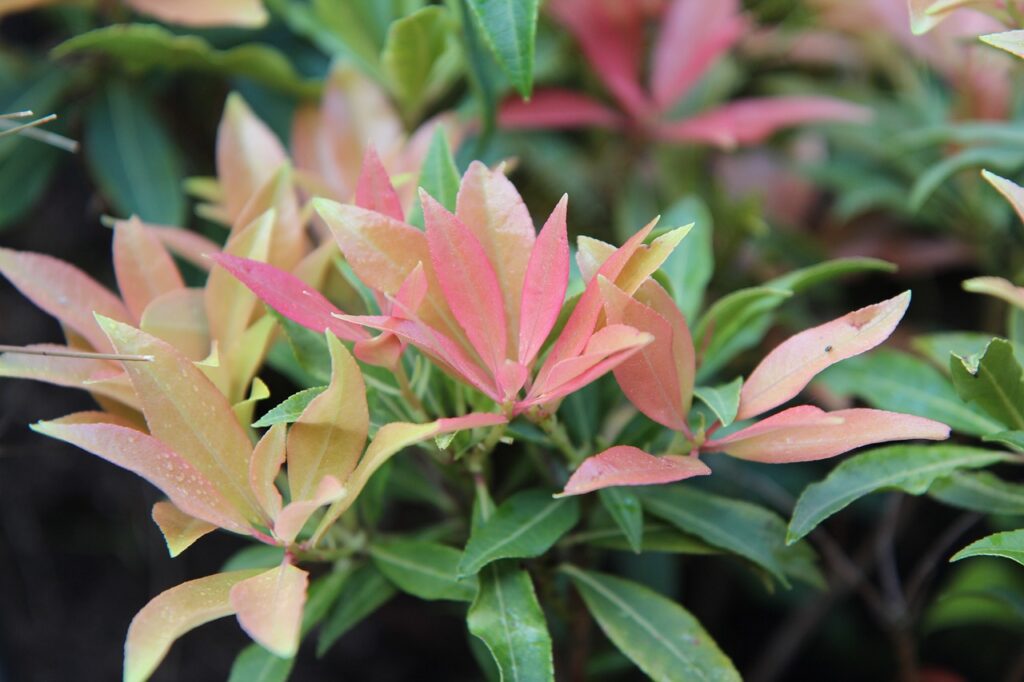
In the autumn, this evergreen shrub undergoes a dramatic transformation, with its lustrous, dark green leaves turning vibrant shades of red, bronze, and burgundy. The colourful foliage adds a burst of warm hues to the autumn landscape. Whilst not as showy as other autumn shrubs, it can brighten up container gardens and help warm up otherwise dull flower beds.
Pieris is not only admired for its autumn colours but also appreciated for its year-round beauty. In some cases, it will flower with hanging cream flowers that look like chandeliers, and its pink blush or white-tipped leaves can add real contrast. It can be a real love or hate shrub, though, as some find it jarring or a little bit too slow-growing to have any real impact on newer gardens.
Whatever you do, prune Pieris lightly and delicately. They don't regenerate quickly at all, and a few minutes of careless pruning can undo decades worth of growth. In most cases, just leave them be.
From the fiery reds to the rich purples and the softer hues of pinks and whites, these shrubs add an artistic touch to your garden's canvas. But it's not just their mesmerizing visual appeal that makes them a must-have; they're a haven for pollinators, ensuring your garden stays buzzing with life. Furthermore, the contrast they provide against the changing foliage is nothing short of breathtaking.

Intrigued? There's more.
Autumn-flowering shrubs bring an essence of tranquillity to your garden, offering a serene escape in the midst of nature's most vibrant show. While other plants are taking their seasonal rest, these shrubs take centre stage, reminding you that the beauty of nature never fades.
What's even better? These shrubs are often low-maintenance, so you can enjoy their splendour without the fuss. If you're looking to add an extra layer of charm to your garden and witness the marvels of autumn in full bloom, it's time to consider planting these captivating shrubs. So, grab your gardening gloves, embrace the autumn hues, and let your garden flourish with the magic of autumn-flowering shrubs.
Make sure you visit my Youtube channel, for more gardening guides. You can also check out my Tweet, Facebook or Instagram for more garden help and tips!
Happy gardening!




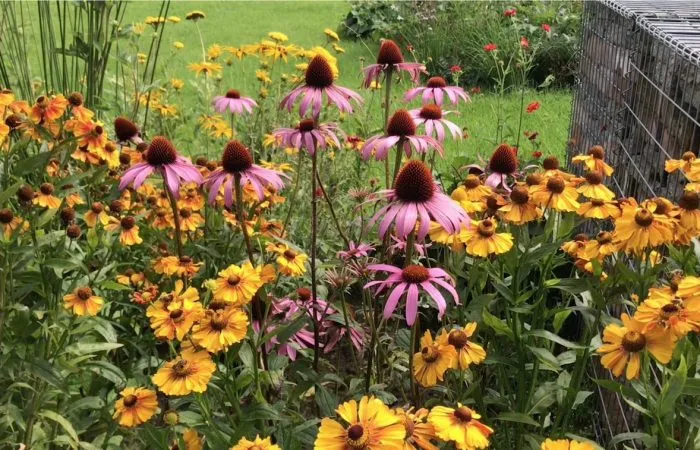

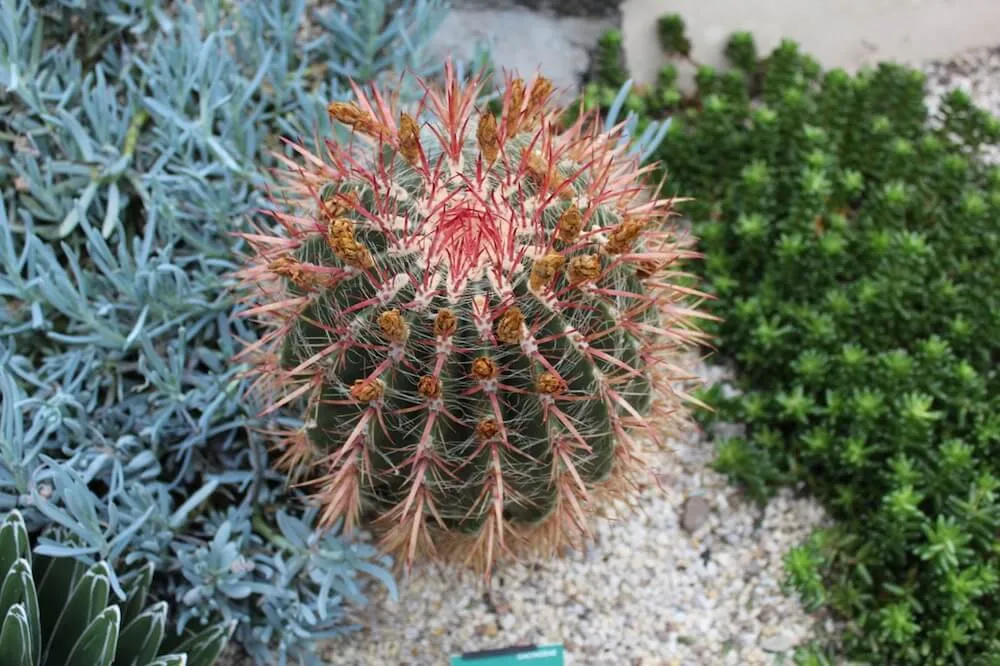
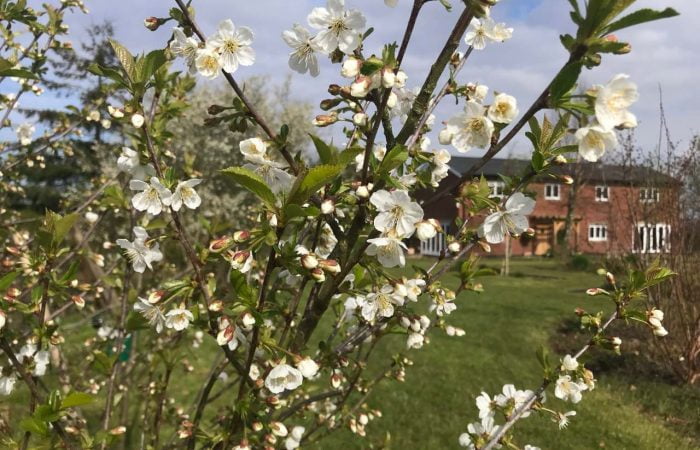


JOIN THE NINJAS
Join our Ninja community for extra guides & Discount Codes for Online Garden Courses!